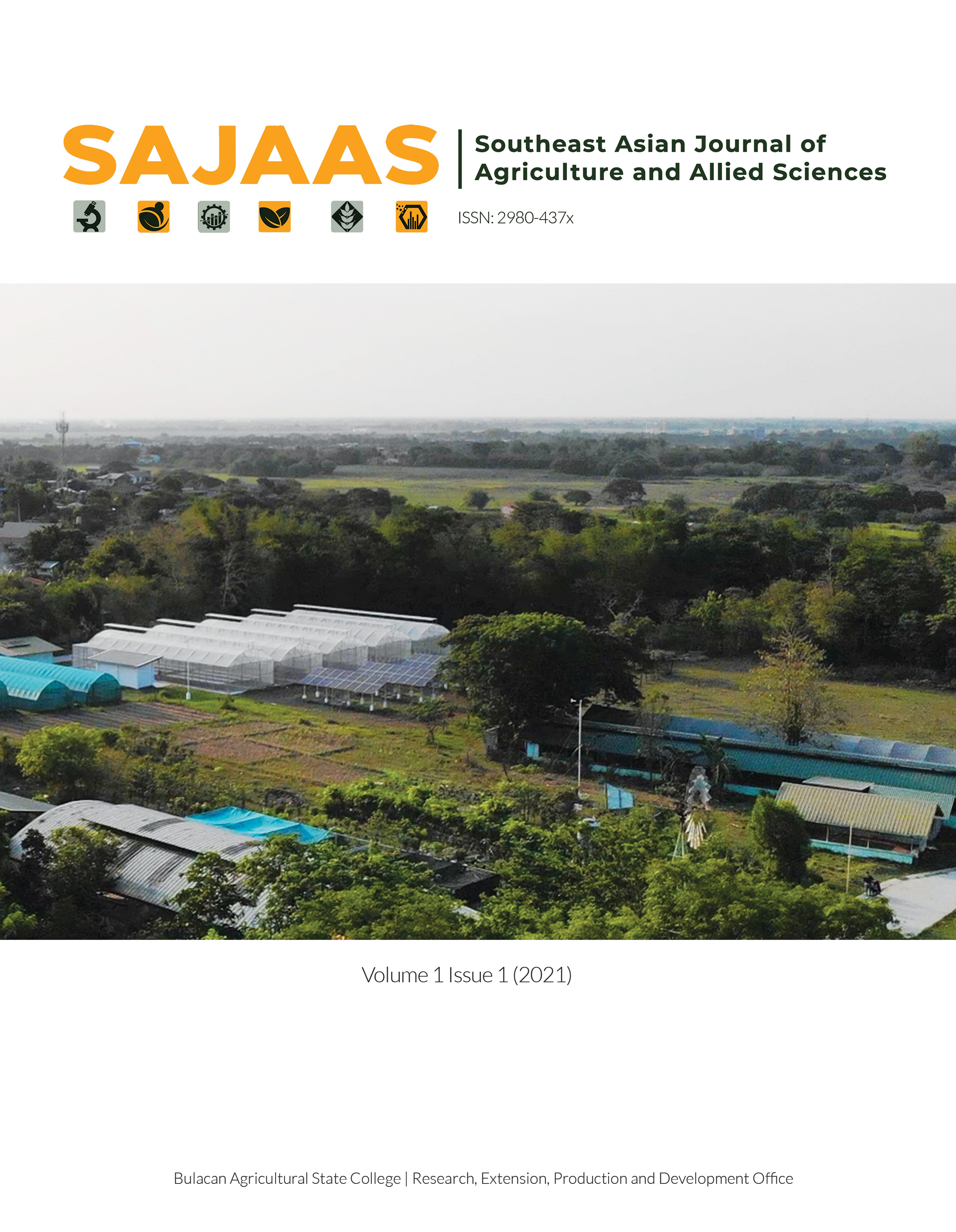Abstract
Stingless bee pollens are good source of vitamins and minerals that can be collected from the surplus of bees. The effect of two drying methods on the drying characteristics, and nutritive value of the stingless bee pollens has been investigated. Microwave drying and oven drying were the methods applied in the study. Results revealed that microwave drying, outweighs oven drying almost in all drying parameters. In terms of the quality of stingless bee pollens, there was no significant difference found in the pH level of the microwave and oven dried samples except for the water activity. For the nutritive value of stingless bee pollens, oven drying showed higher beta carotene content compared to microwave drying but was found to be not statistically different to each other. On the other hand, microwave drying showed higher protein and vitamin E content but was also found to be not statistically different from each other.
References
Abano, E. E. (2016). Kinetics and Quality of Microwave-Assisted Drying of Mango (Mangifera indica), International Journal of Food Science, 10 pages. https://doi.org/10.1155/2016/2037029.
Barajas, J., Cortés Rodríguez, M., Rodriguez-Sandoval, E. (2012). Effect of temperature on the drying process of bee pollen from two zones of Colombia. Journal of Food Process Engineering. 35. 10.1111/j.1745-4530.2010.00577.x.
Campos, M., Bogdanov, S., Almeida-Muradian, L., Szczesna, T., Mancebo, Y., Frigerio, C., & Ferreira, F. (2008). Pollen composition and standardisation of analytical methods. Journal of Apicultural Research and Bee World. 47. 156-163. 10.3896/IBRA.1.47.2.12.
Campos, M., Frigerio, C., Lopes, J. & Bogdanov, S. (2010). What is the future of Bee-Pollen? Journal of ApiProduct and ApiMedical Science. 2. 131 - 144. 10.3896/IBRA.4.02.4.01.
Di Pasquale G, Salignon M, Le Conte Y, Belzunces LP, Decourtye A. (2013). Influence of Pollen Nutrition on Honey Bee Health: Do Pollen. Quality and Diversity Matter? PLoS ONE 8(8): e72016. doi:10.1371/journal.pone.0072016
Komosinska-Vassev, K., Olczyk, P., Kaźmierczak, J., Mencner, L., & Olczyk, K. (2015). Bee pollen: chemical composition and therapeutic application. Evidence-based complementary and alternative medicine: eCAM, 2015, 297425. doi:10.1155/2015/297425
METER Group. (n.d.). How water activity and pH work together to control microbial growth. https://www.metergroup.com/food/articles/how-water-activity-and-ph-work-together…
METER Group. (n.d.). Water activity controls microbial growth. https://www.metergroup.com/food/articles/microbial-growth/
Miranda, F.Z., Somera, C.G.S., Cinense, M.M., Lavarias, J.A. (2020). Microwave-assisted drying of stingless bee (tetragonula biroi) pollens. International Journal of Psychosocial Rehabilitation, 24, 724-731.
Pereira de Melo, Illana & Almeida-Muradian, Ligia. (2010). Stability of antioxidants vitamins in bee pollen samples. Quimica Nova - QUIM NOVA. 33. 10.1590/S0100-40422010000300004.
Philippine Agricultural Engineering Standard. (2000). Agricultural Machinery – Heated-Air Mechanical Grain Dryer – Methods of Test
Philippine Agricultural Engineering Standard. (2010). Agricultural Machinery – Fruit Dryer – Methods of Test
Philippine Agricultural Engineering Standard. (2010). Agricultural Machinery – Fruit Dryer – Specifications
Rebelo, K. S., Ferreira, A. G. & Carvalho-Zilse, G. A. (2016). Physicochemical characteristics of pollen collected by Amazonian stingless bees. Ciência Rural, Santa Maria. v.46, n.5, p.927-932. DOI: 10.1590/0103-8478cr20150999
Somerville, D. (2012). Pollen trapping and storage. http://www.dpi.nsw.gov.au/__data/assets/pdf_file/0003/117516/Pollen-trapping-and-Storage.pdf
Zarein, M., Samadi, S. H., & Ghobadian, B. (2013). Investigation of microwave dryer effect on energy efficiency during drying of apple slices. Journal of the Saudi Society of Agricultural Sciences. 14. 10.1016/j.jssas.2013.06.002.

This work is licensed under a Creative Commons Attribution-NonCommercial-ShareAlike 4.0 International License.
Copyright (c) 2022 Southeast Asian Journal of Agricultural and Allied Sciences

